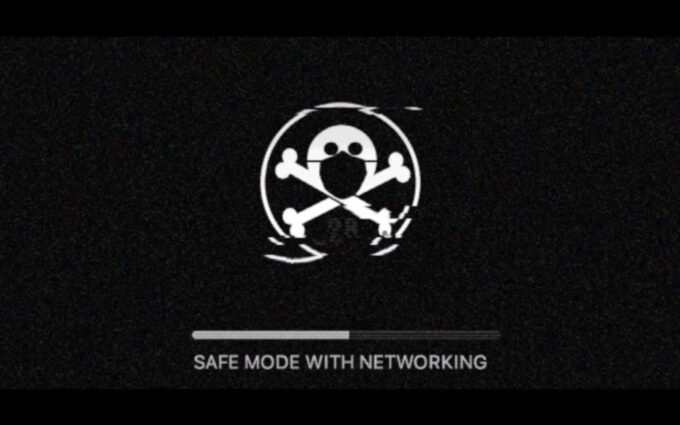
Everything as Code
Discover how 'Everything as Code' boosts agility, ensures consistency, and simplifies recovery after failures or security incidents.
In today’s fast-paced digital world, businesses demand agility, reliability, and efficiency in their IT systems. Traditional methods of managing infrastructure and deployment rely heavily on manual processes. These approaches are slow, error-prone, and lack consistency. The solution? A powerful approach called “Everything as Code” (EaC).
Everything as Code applies software development principles—like version control, automation, and collaboration—to every system component. From infrastructure to deployment and security, everything becomes codified and reusable. EaC ensures systems are faster to deploy, easier to manage, and more resilient in emergencies. Let’s explore how this practice solves critical challenges and transforms IT operations.
What is “Everything as Code”?
Everything as Code treats every part of a system—like infrastructure, configurations, and pipelines—as written, reusable code. By codifying these elements, teams achieve consistency, repeatability, and speed. Tools like Terraform, CloudFormation, and Ansible automate these processes effectively.
EaC extends beyond just infrastructure. It covers deployments, security policies, monitoring, and more. Everything is version-controlled, reviewed, and managed like traditional software code.
This approach ensures teams avoid manual, error-prone setups and embrace efficient, repeatable workflows.
Rapid Recovery After Catastrophic Failures
When disaster strikes, EaC enables fast recovery. A major outage—caused by a fire, hardware failure, or other event—can cripple businesses. Traditionally, rebuilding infrastructure takes days or weeks. EaC simplifies this process entirely.
With infrastructure and configurations stored as code, businesses can recreate environments in minutes. Teams run predefined scripts to rebuild servers, databases, and networks quickly. Recovery no longer depends on piecing together old documentation or manual setups.
EaC minimizes downtime, saving businesses from costly disruptions. Automated recovery ensures consistency, leaving no room for human errors during high-pressure moments.
Resilience During Security Incidents
Security breaches pose significant risks to systems. Attackers often modify configurations or inject vulnerabilities. Businesses must act fast to recover clean, uncompromised environments.
With Everything as Code, teams can rebuild systems from scratch to eliminate malicious changes. For example, a compromised server can be terminated and replaced within minutes. All configurations are safely stored in code, ensuring consistency during the rebuild process.
Version control in EaC provides a clear audit trail. Teams can identify when vulnerabilities were introduced and fix them immediately. This transparency boosts security response times and prevents repeat incidents.
Environment-Agnostic Flexibility
Everything as Code eliminates the restrictions of specific environments. Businesses can define infrastructure and configurations once and deploy them anywhere. Whether on AWS, Google Cloud, Azure, or on-premises, the same code works with minimal changes.
This flexibility empowers businesses to avoid vendor lock-in. If switching to a new cloud provider becomes necessary, teams can migrate easily. Instead of starting over, they adapt existing code to match the new provider’s tools.
EaC also ensures consistency across development, testing, and production environments. Developers can test code on systems identical to production, reducing unexpected deployment issues. Testing environments can be recreated or destroyed as needed, ensuring clean conditions for every test.
Faster Innovation with Automation
EaC drives innovation by automating repetitive tasks. Manual setups, network configurations, and application deployments consume valuable time. Codifying these processes streamlines workflows and lets teams focus on building features.
Deploying new applications or updates becomes quick and simple. Developers update the code, test it, and merge changes. Deployment pipelines handle the rest automatically. This speed enables businesses to respond to market demands faster.
EaC fosters collaboration by breaking silos between development, operations, and security teams. All teams work from a shared codebase, aligning efforts and reducing misunderstandings.
Ensuring Consistency and Reliability
Consistency is key to reliable systems. Manual setups often vary between environments, causing unexpected errors. EaC ensures environments are consistent every time they’re deployed.
Codified processes guarantee that each server, network, and application has identical configurations. Updates are applied uniformly across environments by simply updating the code and redeploying.
This approach saves time, reduces errors, and ensures systems stay up-to-date with the latest security patches.
Benefits of Everything as Code
EaC offers many benefits that address modern IT challenges:
- Faster Recovery: Rebuild systems quickly after failures or breaches.
- Enhanced Security: Maintain clean, uncompromised environments and clear audit trails.
- Flexibility: Deploy the same code across cloud providers or on-premises environments.
- Consistency: Ensure identical setups for development, testing, and production.
- Collaboration: Align development, operations, and security teams using shared workflows.
- Innovation: Automate repetitive tasks and focus on business priorities.
How to Adopt Everything as Code
Transitioning to EaC requires planning and the right tools. Here are steps to get started:
- Security From The Start: Bake security into your automation and processes from the onset. Ensure your tooling has the necessary security controls implemented and you’ve ensured the ‘principle of least privilege’.
- Select Tools: Choose tools like Terraform for infrastructure or Ansible for configuration management.
- Start Small: Codify a single environment or application to build experience.
- Use Version Control: Store everything in Git to track changes and collaborate effectively.
- Automate Pipelines: Build CI/CD pipelines to test, deploy, and monitor changes automatically.
- Encourage Collaboration: Involve all teams—development, operations, and security—in adopting EaC practices.
Why Businesses Need Everything as Code
Businesses face constant pressure to improve reliability and speed. Downtime, security incidents, and inefficiencies can cause huge losses. Everything as Code addresses these challenges directly.
By codifying infrastructure, deployment, and configurations, businesses can rebuild systems faster, maintain consistency, and scale effectively. EaC empowers teams to innovate while maintaining security and resilience.
The environment-agnostic nature of EaC ensures businesses can adapt to changing requirements. Whether migrating providers or scaling operations, EaC simplifies these transitions.
Conclusion: A Code-Driven Future
Everything as Code represents the future of IT systems. By treating every system component as codified, reusable scripts, businesses unlock agility, consistency, and resilience.
EaC enables rapid recovery after failures, robust responses to security incidents, and seamless migration between environments. It fosters collaboration and innovation while ensuring systems remain secure and reliable.
The world is shifting toward automation and repeatability. Everything as Code isn’t just a trend—it’s a strategy for thriving in a software-driven era. Embrace it today to prepare for tomorrow’s challenges.
View Comments

Trusting AI: Threat Detection in SIEM Tooling
It's about to become 2025 and the world continues to change. Businesses look to...


